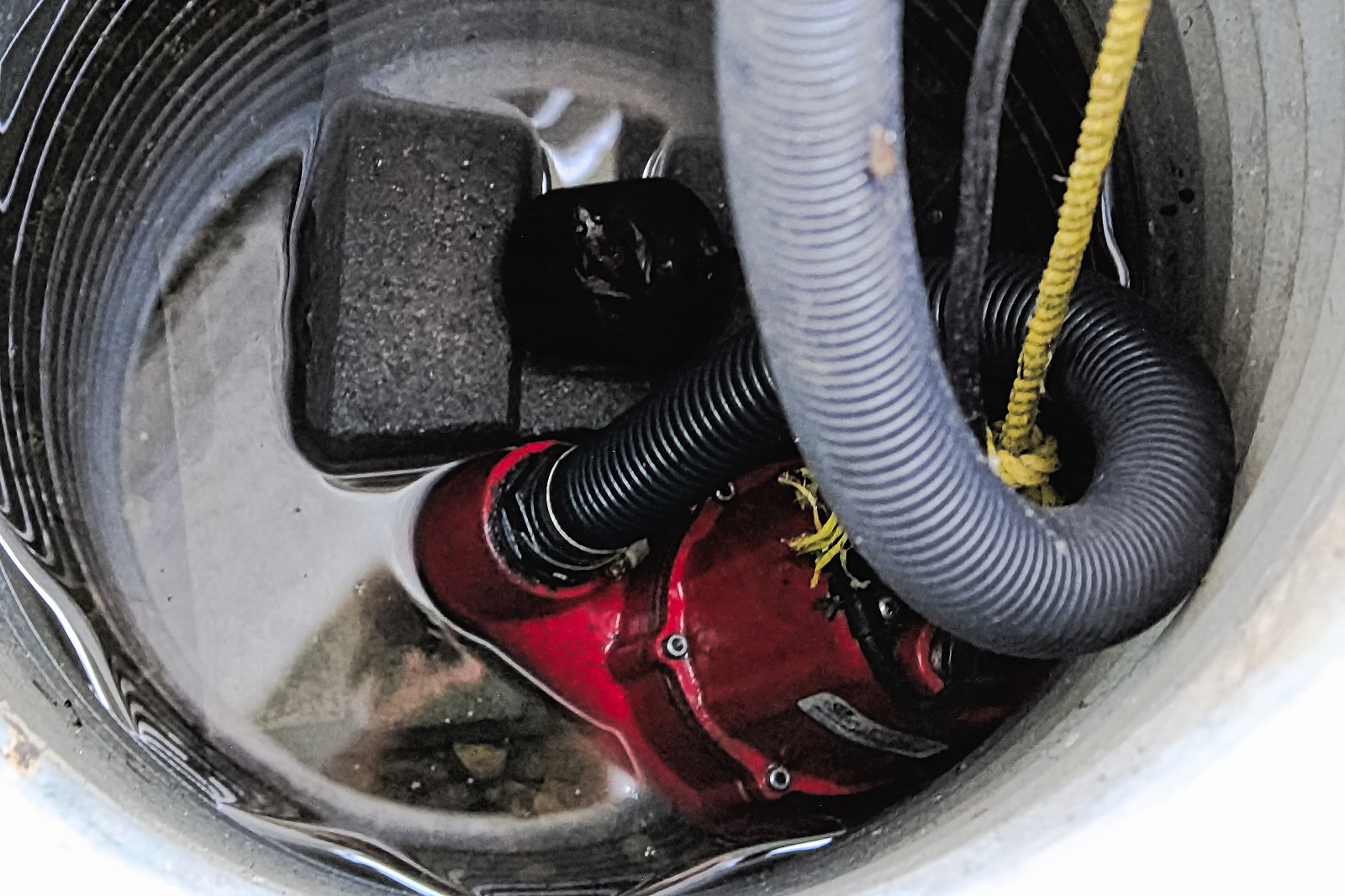Leading Techniques for Cleaning a Sump Pump
Leading Techniques for Cleaning a Sump Pump
Blog Article
Just how do you really feel in regards to Cleaning & Maintenance Tips for Your Home's Sump Pump?

Sump pumps are crucial elements in lots of homes, specifically in areas vulnerable to flooding or extreme dampness. They aid avoid water damages by effectively eliminating excess water from basements or crawl spaces. Nevertheless, like any other device, sump pumps need regular maintenance to guarantee they function effectively when required one of the most. Cleansing your sump pump is an essential part of its maintenance, and recognizing how to do it appropriately can save you from costly repair services and possible disasters.
Introduction
Keeping a clean sump pump is important for its proper functioning and long life. Neglecting this vital job can lead to clogs, breakdowns, and ultimately, water damage to your home. For that reason, discovering how to cleanse a sump pump is important for house owners who rely upon these tools to maintain their basements completely dry and protected.
Comprehending the Sump Pump
Before diving into the cleaning process, it's necessary to have a fundamental understanding of how a sump pump functions. Typically mounted in a pit or container below the cellar flooring, a sump pump contains several key parts, including a pump, a float switch, and a discharge pipeline. When water builds up in the pit, the float switch turns on the pump, which after that pumps the water out via the discharge pipe, far from the building's structure.
Signs of a Dirty Sump Pump
Understanding when your sump pump needs cleaning is important for avoiding potential malfunctions. Some usual indications that show a filthy sump pump consist of odd noises during procedure, reduced water flow, and noticeable debris in the pit. If you discover any of these symptoms, it's important to clean your sump pump quickly to prevent any further problems.
Preparing for Cleansing
Before you start cleansing your sump pump, it's essential to take some safety preventative measures. Start by turning off the power to the pump to prevent any type of electrical crashes. In addition, wear ideal protective equipment, such as gloves and goggles, to protect yourself from dust, debris, and potential virus.
Detailed Overview to Cleaning a Sump Pump
Shutting down the Power
Begin by detaching the power supply to the sump pump to avoid any crashes while cleansing.
Removing Debris and Dirt
Utilize a bucket or an inside story to get rid of any type of visible debris, dust, or sediment from the sump pit. Dispose of the debris correctly to stop it from blocking the pump or the discharge pipe.
Cleansing the Pump and Drift Switch
Once the pit is clear of debris, very carefully get rid of the pump from the pit. Evaluate the pump and the float button for any type of signs of damage or wear. Use a soft brush or towel to clean up the surface areas and get rid of any kind of collected crud.
Purging the System
After cleaning the pump and float button, flush the sump pit with clean water to get rid of any type of remaining dirt or debris. This will aid make sure that the pump operates smoothly and effectively.
Checking for Proper Performance
Prior to reinstalling the pump, do a quick examination to make sure that the float switch turns on the pump properly. Pour some water into the sump pit and observe the pump's procedure. If every little thing is functioning correctly, you can reassemble the pump and reconnect the power supply.
Maintenance Tips to Keep Your Sump Pump Clean
In addition to routine cleaning, there are numerous upkeep tips you can comply with to keep your sump pump in ideal condition:
Conclusion
Cleaning your sump pump is an important facet of its upkeep and makes certain that it operates effectively when you need it the most. By adhering to the steps described in this guide and including routine upkeep right into your regimen, you can extend the lifespan of your sump pump and safeguard your home from water damage.
6 STEPS ON HOW TO CLEAN A SUMP PUMP PROPERLY
UNDERSTANDING SUMP PUMPS
Your sump pump plays a crucial role in protecting your home by managing and removing excess water. It primarily functions as a “shield”, guarding your basement against the damaging effects of water accumulation. The pump is housed in a sump pit in the lowest part of your basement, and its job is to pump out any water that collects there.
During heavy rainfalls or when snow melts rapidly, water can infiltrate your basement, posing potential risks like flooding, structural damage, and harmful mold growth. Here, the sump pump springs into action, pumping out the intruding water and directing it away from your home.
SAFETY FIRST
Before cleaning, remember to prioritize safety. Disconnect the sump pump from the power source to prevent any accidental electric shocks. Also, wear sturdy gloves to protect your hands from any sharp or dirty components within the pump.
REMOVE THE SUMP PUMP
After ensuring your safety, the next step is to remove the sump pump from its pit. Doing this might require careful maneuvering as you don’t want to damage any pump components. Once removed, clean the sump pit to remove any accumulated debris or sludge.
INSPECT THE PUMP
Inspect the pump for any visible signs of wear or damage. Check the power cord, float switch, and impeller housing. If any components look worn out or damaged, consider replacing them to ensure optimal performance.
CLEAN THE PUMP
Thoroughly clean the pump with warm, soapy water. Make sure to rid it of any dirt, gravel, or other debris that might impede its performance. You can use a toothbrush to clean the small, hard-to-reach parts of the pump.
REINSTALL THE SUMP PUMP
Reinstall the pump into the sump pit Make sure it’s positioned correctly to remove the water effectively Once it’s back in place, reconnect it to the power source TEST THE PUMP
Finally, pour some water into the pit to ensure the pump works correctly. It should start automatically and begin pumping out the water; if it doesn’t, check the power source and the positioning of the pump.
Remember, while cleaning your sump pump is an essential part of home maintenance, hiring a professional plumber for a thorough inspection and cleaning at least once a year is also important. This will ensure that your pump is in optimal condition, ready to protect your home from potential water damage.
BEST PRACTICES FOR CLEANING SUMP PUMP DISCHARGE PIPES
Regular Inspection: Regularly inspect your discharge pipes, especially during heavy rainfall or snowmelt periods. Look for any signs of blockage or damage. Early detection of problems can prevent serious issues down the line. Periodic Cleaning: Over time, sediment and debris can accumulate in the discharge pipes, impeding the flow of water. Regular cleaning helps keep the pipes clear and functioning efficiently. You can use a high-pressure water jet to effectively clean the pipes. Insulation During Winter: In colder climates, discharge pipes can freeze, blocking the outflow of water. Protect your discharge pipes from freezing temperatures by insulating them with foam pipe insulation. This will ensure the sump pump can continue to discharge water even in freezing conditions. Proper Positioning: The discharge pipe should be positioned to direct water away from your home’s foundation. Improper positioning can lead to water seeping back into the basement. Ensure the pipe is long enough and angled correctly. Installation of a Check Valve: A check valve prevents water from flowing back into your sump pit after the pump has pushed it out. Installing a check valve helps maintain the efficiency of your sump pump and reduces the risk of flooding. Minimize Pipe Turns: Every curve or turn in the discharge pipe can decrease the efficiency of water flow. By minimizing turns and bends in your discharge pipe, you can increase the efficiency of your sump pump. https://www.fullspeedplumbing.com/how-to-clean-a-sump-pump-properly9999/

I recently found that review on while doing a search on the search engines. Do you know another person who is fascinated about the subject? Please feel free to promote it. We thank you for your readership.
Call Today Report this page